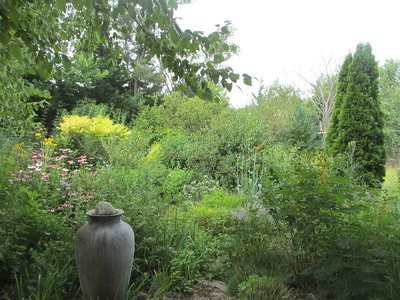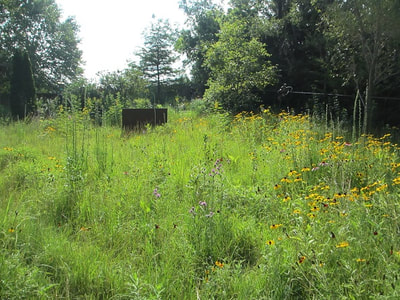"Native and adapted" is an oft-used term to promote plants that thrive in local sites and ecoregions. "Adapted" will commonly mean both exotic plants and plants native to other regions of the United States. My genuine question is this: if one significant goal is wildlife support, particularly pollinators (adults and larvae), how far can we reach to nearby states or regions for "native" plants before we lose a plethora of ecosystem services? And if the argument is anticipating climate change and species migration, how can we predict the effects and results of both? Shouldn't our goal be to increase indigenous wildlife populations so they theoretically have the chance to build numbers, adapt, and just maybe a few will evolve? Should we keep bringing in new plants to make the region even more altered? And if the "native" plants are in the same ecoregion, does that mean they are part of functioning biodiversity in the place they're being brought to? In what ways?
I'll be even more candid, knowing I'm dipping into some very hot water. But keep in mind my goal is not to undermine but to question and try to think more critically (even if it's uncomfortable), so that we can grow as stewards of life. This is a conversation. So to be candid, if we bring in a plant from the other side of a state next door, is it helping wildlife? What role does it have in this ecosystem? Even if that ecosystem is urban and highly altered -- or rural and highly altered -- many studies show pollinators flock to urban areas for increased numbers of blooms in home landscapes and vacant lots. What species are using what plants -- native, exotic, and next-door native? Are we bringing in plants because it provides us joy and aesthetic delight, or because we're working off of research that shows species currently and / or will need this plant in the near future?
These are genuine questions: I welcome thoughts and answers from those who are far more knowledgeable and experienced than me. I believe it's critical to have these types of conversations as the field of horticulture and landscape design evolves this century amid the pressures of climate change, mass extinction, and urbanization. More and more plants are being called upon to perform on many levels at once, from just surviving and providing aesthetic delight, to sequestering carbon, filtering runoff, and helping birds and pollinators thrive. If we don't ask questions, we'll never grow and adapt with the world we're altering at breakneck speed.




 RSS Feed
RSS Feed

